Volcano Live
volcanolive.com
Lipari Volcano | John Seach

Aeolian Islands, Italy
38.48 N, 14.95 E,
summit elevation 602
stratovolcano
Lipari is the largest and most populated of the Aeolian Islands in Italy. It is located on a 1000-m-deep shelf of the Tyrrhenian Sea off the north coast of Sicily. Lipari volcano is located at the subduction of the African tectonic plate under the European plate.
Low-temperature fumaroles (80–90 deg C) and hot springs are the only current activity at Lipari volcano
Lipari Island photos by John Seach
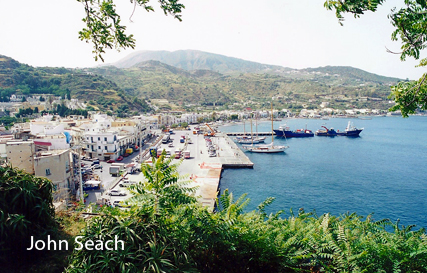
Lipari Island, Italy
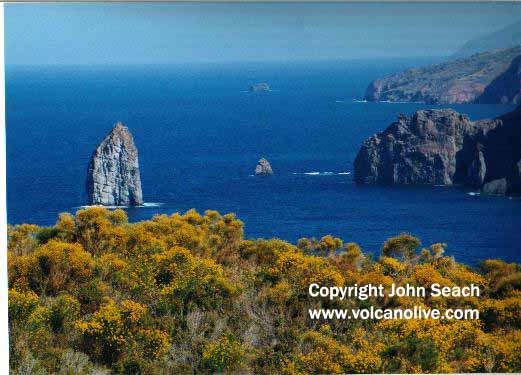
Southern side of Lipari from Vulcano
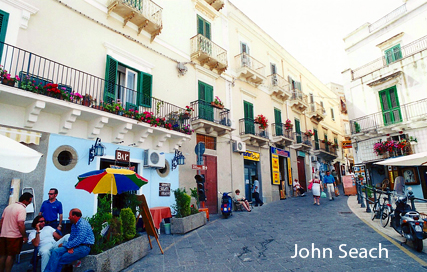
Lipari Island, Italy
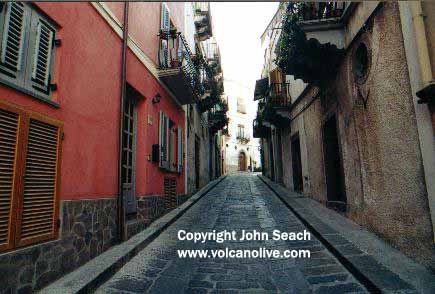
Lipari Island
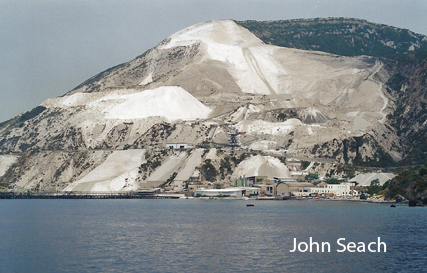
Pumice mining, Lipari Island, Italy
Volcanic History of Lipari Island
The island was formed in three phases. Lipari island formed 150 000 years ago
when subaerial volcanics developed on top of a pile of pillow lavas. The eruptions produced Monte Chirica and other centres in the west, followed by the double andesitic volcano of Monterosa in the east. The second eruptive phase lasted from 100,000 to 80,000 years ago. The main feature was the growth of the large andesitic stratovolcano Monte San Angelo and subsidiary centres to the northwest. About 40,000 years ago eruptions at Lipari became acidic and rhyolite domes formed in the south of the island.
1230 Eruption
The most recent eruptions at Lipari volcano occurred about 1230 AD. The eruption of Monte Pilato produced a rhyolitic lava flow.
Eruptions 729 AD
Eruptions from Monte Pilato centres in 729 AD produced large amounts of pumice. The pumice deposits are over 200 m thick and cover the older volcano of Monte Chirica. The explosive production of pumice ended with two large obsidian flows from Rocche Rose and Forgia Vecchia vents.
Monte Guardia eruption (22,000 years ago)
Deposits from the eruption vary in thickness from more than 60 m near Monte Guardia, where the vent is located, to <1 m in the northern part of the island. The eruption produced pyroclastic deposits followed by emplacement of lava domes. Denser, mixed magma was erupted first, followed by a larger volume of an unmixed, lighter rhyolitic magma. The total volume of dense magma erupted was about 0.5 cubic km.
All volcanic centres on Lipari follow the same pattern. Eruptions begin with a large explosions and end with extrusion of lava.
Futher reading
Cortese, M., Frazzetta, G. and La Volpe, L., 1986. Volcanic history of Lipari (Aeolian Islands, Italy) during the last 10,000 years. Journal of Volcanology and Geothermal Research, 27(1-2), pp.117-133.
Lucchi, F., Peccerillo, A., Keller, J., Tranne, C.A. and Rossi, P.L. eds., 2013, December. The Aeolian Islands Volcanoes. Geological Society of London.
Lipari Volcano Eruptions
1230 ± 40, 780 AD ± 100, 5820 BC ± 75